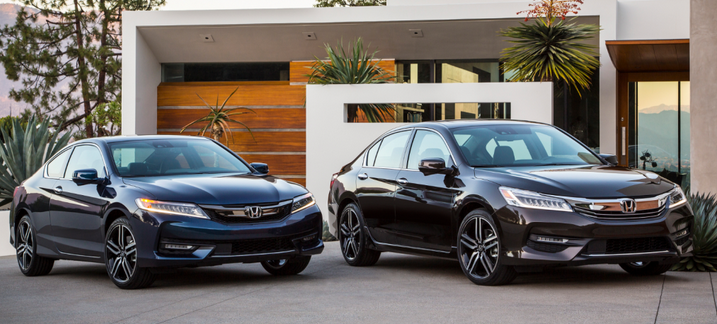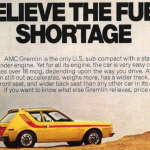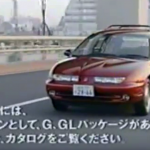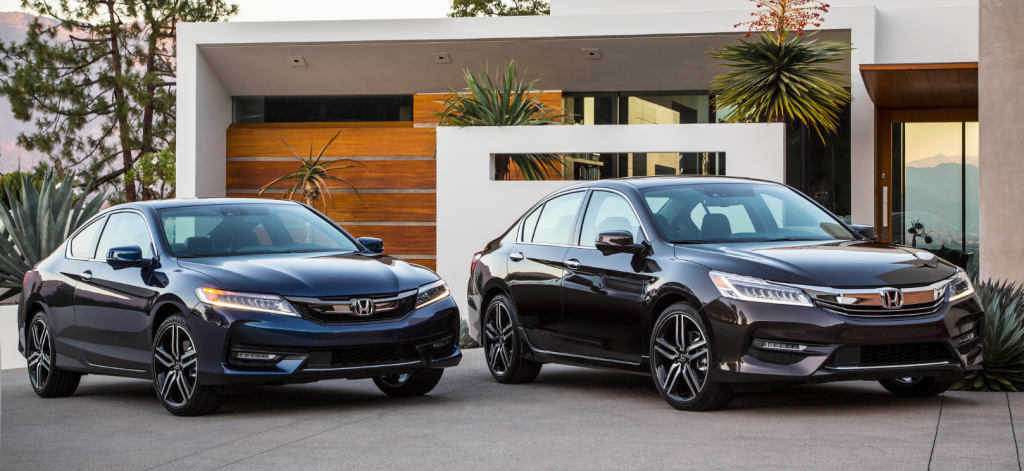
 It’s a bit dangerous to mess with a successful formula. Just ask Coca-Cola, which introduced reformulated “New Coke” 30 years ago – with disastrous results.
It’s a bit dangerous to mess with a successful formula. Just ask Coca-Cola, which introduced reformulated “New Coke” 30 years ago – with disastrous results.
That case became a textbook example on how not to mess with success. Seems Honda took that to heart when approaching the “new” 2016 Accord.
2016 Honda Accord
Depending on what criteria you use, Honda’s Accord has either been the best-selling car in the country (retail sales) or the second-best (overall sales, which includes fleets). Either way, a resounding success. So how do you update such a popular product?
Veeeeery carefully.

In the industry it’s referred to as a “Mid-cycle freshening”: not a full redesign, but rather a styling tweak here, some added technology there. Which in the Accord’s case, is probably enough.
In profile, the 2015 and 2016 models look about alike. Turn them to see the front or back, however, and you’ll notice a bit of a difference.
Both the 2016 Accord coupe and sedan get new grilles, headlights, and front fascia, and they’re different from one another. Back ends show less of a change from last year, but are likewise distinct between the body styles.
Trim levels primarily carry over, with 4-cylinder models offered in LX, (LX-S for the coupe), Sport (sedan only), EX, and EX-L, while V6s come in EX-L and Touring (the latter new for the coupe). Gone for now is the Hybrid, though Honda says it will return early next year.
Powertrains didn’t change much, either. The base engine remains a 2.4-liter four with 185 horsepower (189 in the Accord Sport sedan) mated to either a 6-speed manual transmission or CVT automatic. V6 models again get a 3.5-liter rated at 278 horsepower paired with a 6-speed automatic; coupes also offer a 6-speed manual. Availability of a manual transmission and V6 engine are rare for the class, something that supports the Accord’s position as a somewhat sportier entry. So, too, do the newly available 19-inch wheels on the 4-cylinder Sport sedan and both Touring bodystyles.
That quick synopsis covers what’s largely the same. What’s new is going to take a bit longer.
Chief among the newly available features is Honda Sensing, a collection of advanced safety and driver-assistance technologies that include:
- Forward Collision Warning
- Forward Collision Mitigation
- Lane Departure Warning
- Lane Keeping Assist
- Road Departure Mitigation
- Adaptive Cruise Control
Best of all, Honda Sensing is available on ALL models (except those with manual transmission), something that’s rarely done in today’s market; too often, advanced safety features are only offered on top trim levels. Furthermore, it only adds $1000 to the price ($2000 on EX-Ls, as it’s grouped with a navigation system), making it nearly a no-brainer choice. So kudos to Honda for that. Another new safety feature – standard on all models — is an expanded-view driver’s mirror that puts a wide-angle lens at the outside edge to give a wider view of what’s beside the car. Continuing as standard is a multi-angle rearview camera (which includes a 180-degree view). EX and above trim levels include Honda LaneWatch, which displays a wide-angle view along the right side of the car on the dashboard screen when the right turn signal is activated, along with the HondaLink Assist emergency assistance system. Touring adds rain-sensing wipers, front and rear obstacle detection, and automatic high-beam headlights.
2015 Toyota Camry: The Same, and Better
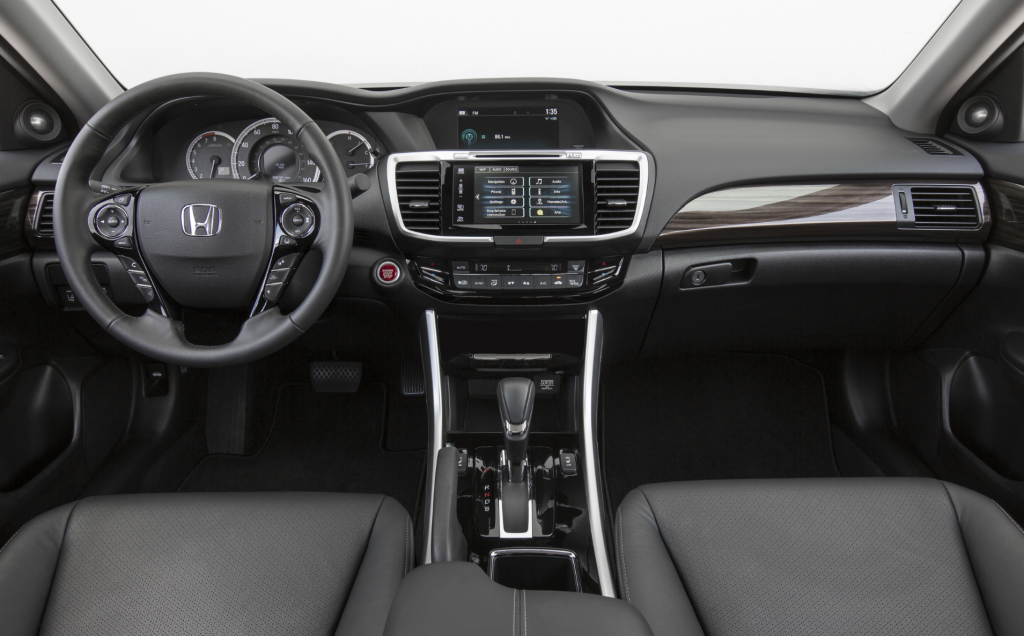
On the tech side, EX and above trim levels get a new 7-inch touchscreen Display Audio system that works via the same “swipe, tap, and pinch” motions as a smartphone. It includes Apple CarPlay and Android Auto, both offering smartphone-enabled functions such as navigation, audio streaming, and voice-controlled text messaging. The same models also include HondaLink cloud-based connected-car system with Aha. All models come standard with Bluetooth cell-phone link and streaming audio along with Pandora capability.
Other new-for-’16 features include a split (instead of one-piece) folding rear seat back on all but LX/LX-S (which retain a one-piece), remote engine start and HD radio on EX and above, and on Touring models, rain-sensing wipers and heated rear seat (sedan only).
Many features aren’t so much “new” as they’re now offered on lower-level models. These include a 10-way power driver seat on EX coupes and driver-seat memory on EX-L coupes, along with satellite radio and HomeLink garage-door opener on all EX models.
All these changes make a great car even better.
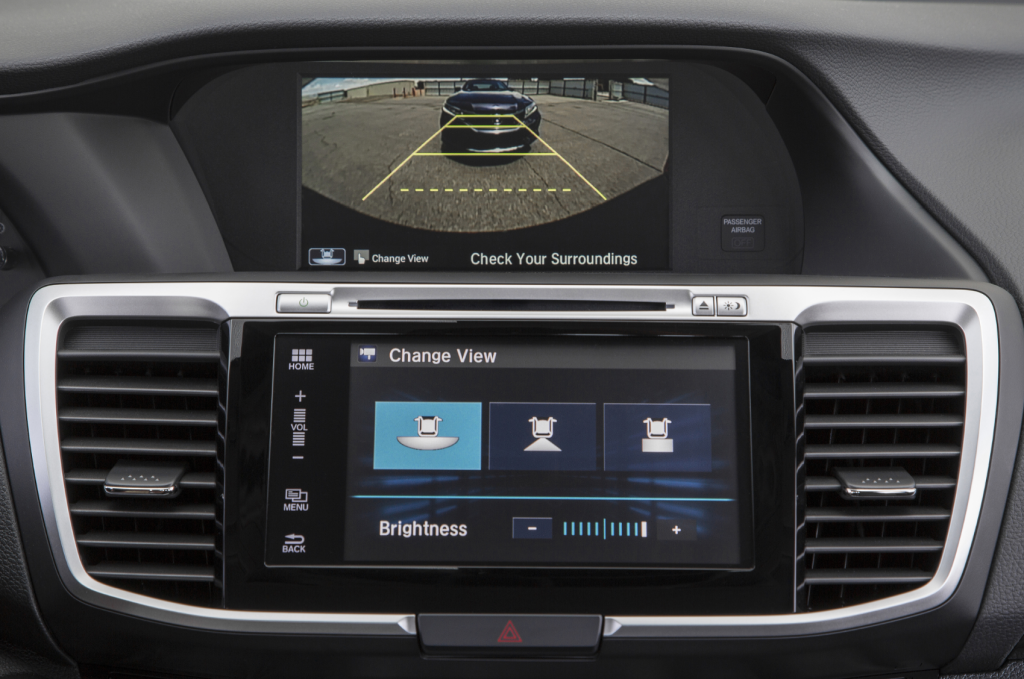
Accord has long impressed us, and this 9th generation – introduced for 2013 – has continued that trend. The 4-cylinder EX-L sedan we drove at the Southern California preview boasted a rich-looking two-tone interior with dark wood trim and numerous padded surfaces (including my favorite, the door tops). Thanks to thin roof pillars, visibility is about as good as it gets in this class, and I’ve always been a real fan of Honda’s 180-degree wide-angle rearview camera, which can “see” both ways down a parking-lot aisle when backing. The expected interior storage spaces are augmented by two dash bins – one covered and fitted with a USB port to hide and charge a cell phone – and both are within easy reach of the driver and large enough to be useful.
Oddly, front headroom and legroom are only “adequate,” as really tall folks might feel pinched. Also feeling pinched were the backs of my thighs, as the long seat cushion seemed to be tilted too high at the forward edge. Furthermore, the power seat cushion didn’t raise up high enough to allow really short drivers to easily see over the steering wheel. In back, legroom was vast – even with the front seat slid all the way back – but headroom seemed only sufficient for those up to about 6 feet tall.
Test Drive: 2015 Subaru Legacy 3.6R Limited
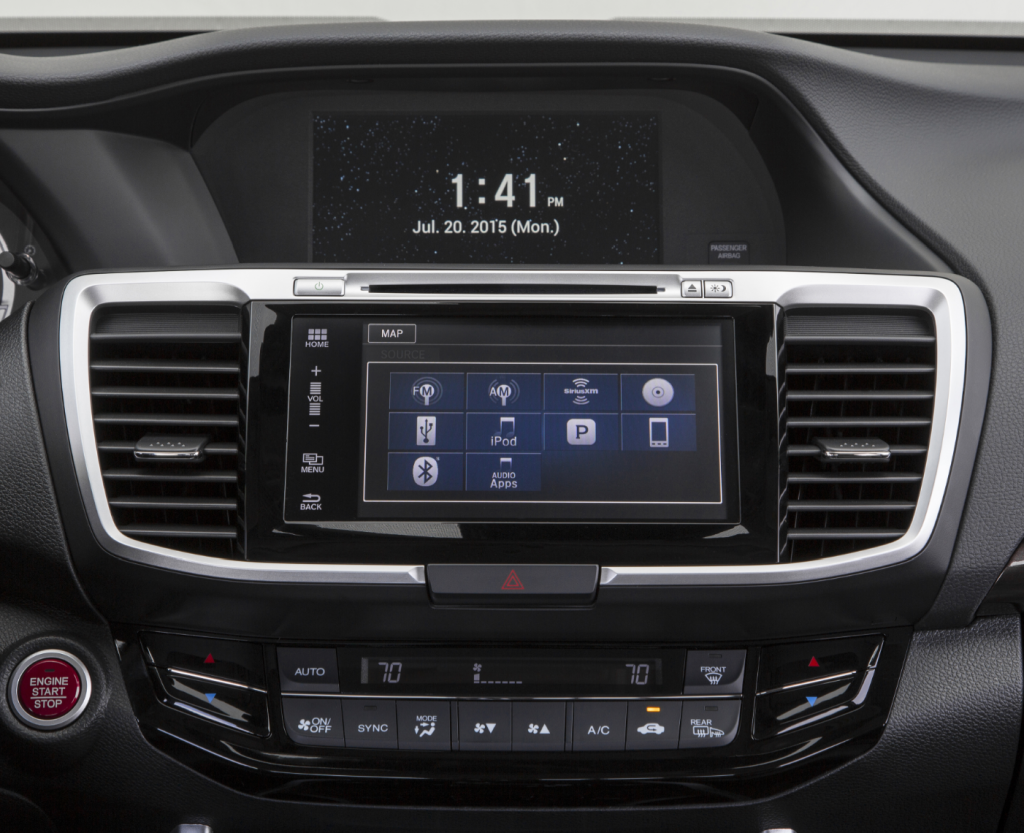
Our test car was fitted with the new Display Audio system, which uses a touchscreen much like those found in other recent Hondas. There are no knobs or buttons; rather, everything is done through the touchscreen. Particularly for volume adjustment and tuning, we miss having good-‘ol knobs, though redundant steering-wheel controls help. Similarly, we’d prefer the traditional three rotary dials for climate controls, as we find the repetitive-step pushbuttons that adjust temperature, mode, and fan speed to be rather tedious to use.
While the trunk is large and wide at the rear, it narrows considerably between the wheelwells. The new split rear seat backs have releases in the trunk, but when folded, they rest about 3 inches above the level of the trunk floor and the opening they reveal is rather restricted in size.
Full-throttle launches in 4-cylinder versions are rather “soft,” though overall acceleration is certainly adequate. By contrast, V6 models are impressively quick, delivering a level of responsive power that is becoming increasingly rare in this class. What you give up with the V6 is some fuel economy: whereas the 4-cylinder/CVT combination in our EX-L is EPA-rated at 27 city/37 highway, the V6 with automatic is only 21/34.
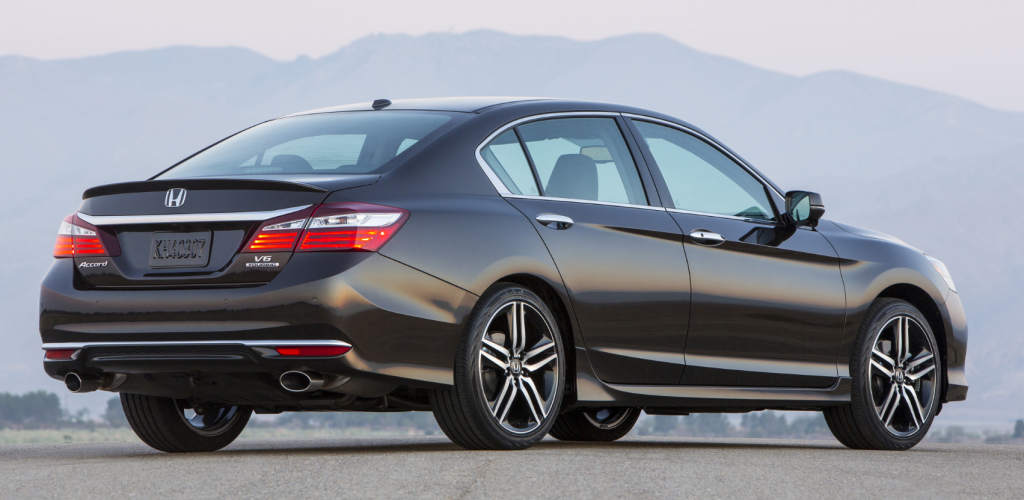
Although our test route didn’t include many bumps, the EX-L sedan handled those we found with little fanfare; a test around our Chicagoland headquarters will be much more telling. However, our tester rode on 17-inch, 55-series tires. We briefly tested a Sport sedan, and its 19-inch 40-series tires (also used on top-line Touring models) were noticeably stiffer over rough pavement. Handling has long been an Accord strength, and indeed, the versions we drove continued to score high marks in this regard.
Accord may lack the vast passenger space of some rivals, and its audio and climate controls might not be to everyone’s liking. But in most other regards, it continues as a top-notch midsize car that now offers equally top-notch features, qualities that are sure to keep it at the head of the industry sales charts.
Test Drive: 2014 Honda Accord Hybrid Touring

